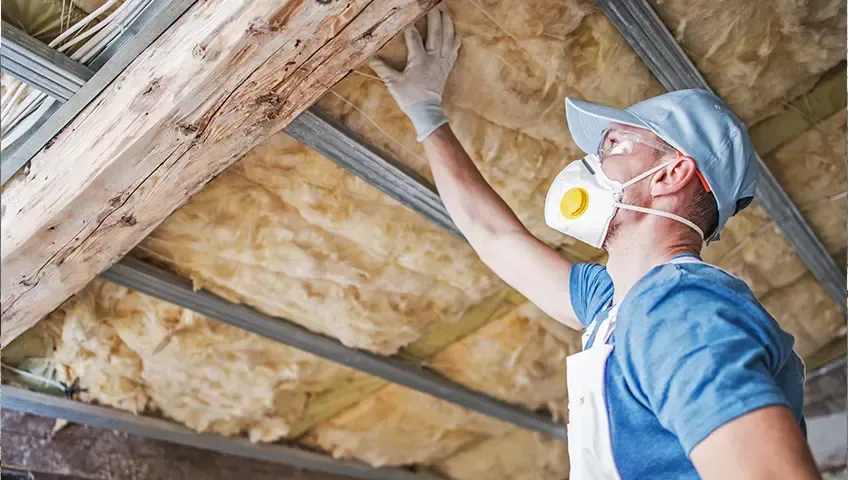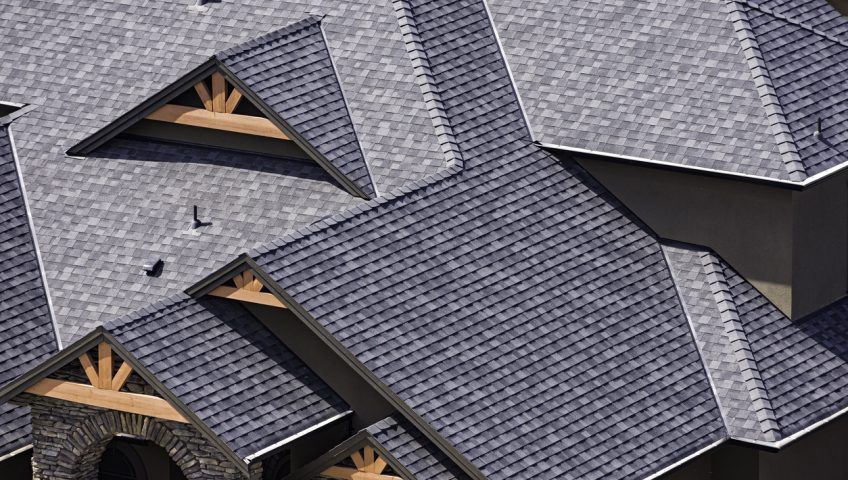What Type of Roofing Underlayment is Right For Your Home?
Roofing underlayment is a crucial component in the construction and longevity of your roof. It’s a secondary barrier against the elements, providing added protection under your shingles or tiles. Choosing the right underlayment for your home depends on your local climate, roof type, and budget. Here, Feeney Roofing will explore the different types of roofing underlayment and help you determine which one is best suited for your needs.
Why is Roofing Underlayment Important?
Roofing underlayment is a water-resistant or waterproof barrier material installed directly onto your roof deck. It serves as a protective layer to prevent moisture, wind, and other elements from penetrating your home. There are three primary types of roofing underlayment: asphalt-saturated felt, synthetic underlayment, and rubberized asphalt underlayment.
Asphalt-Saturated Felt
Asphalt-saturated felt, commonly known as tar paper, has been a staple in roofing for decades. It’s made by saturating a base material (typically organic or fiberglass) with asphalt to create a water-resistant layer.
Why Choose Asphalt-Saturated Felt
Asphalt-saturated felt is an affordable option and provides adequate protection for most roofing systems. It is relatively easy to install and has a proven track record in various climates. The material offers a breathable barrier, which can help prevent moisture buildup under your roof covering.
Why Asphalt-Saturated Felt isn’t Right for You
However, asphalt-saturated felt is not without its drawbacks. It can tear easily during installation, especially in windy conditions, and it may degrade faster than other types of underlayment when exposed to the elements. Additionally, it’s heavier than synthetic options, which can add to the overall weight of your roofing system.
Ideal Use
Asphalt-saturated felt is suitable for homeowners looking for a cost-effective solution and those with traditional roofing materials like asphalt shingles. It performs well in moderate climates but may not be the best choice for areas with extreme weather conditions.
Synthetic Underlayment
Synthetic underlayment is made from woven or spun polypropylene or polyethene fibers, creating a lightweight, durable, and water-resistant barrier. It’s designed to offer superior performance compared to traditional felt underlayment.
Why Choose Synthetic Underlayment
One of the main benefits of synthetic underlayment is its durability. It’s resistant to tearing, even in harsh weather conditions, and can withstand prolonged exposure to UV rays. Synthetic underlayment is also lightweight, making it easier to handle and install. It provides excellent water resistance and often features non-slip surfaces to improve safety during installation.
Why Synthetic Underlayment isn’t Right For You
The primary downside of synthetic underlayment is the cost. It tends to be more expensive than asphalt-saturated felt. However, the higher initial investment can be justified by its longer lifespan and enhanced performance.
Ideal Use
Synthetic underlayment is ideal for homeowners who prioritize durability and performance, especially in areas prone to severe weather. It’s suitable for all types of roofing materials, including asphalt shingles, metal roofing, and tiles.
Rubberized Asphalt Underlayment
Rubberized asphalt underlayment is a high-performance material that combines asphalt with rubber polymers to create a fully waterproof barrier. It typically features a peel-and-stick application, allowing it to adhere directly to the roof deck.
Why Choose Rubberized Asphalt Underlayment
Rubberized asphalt underlayment provides the highest level of protection among the three types. It is completely waterproof and offers superior resistance to extreme temperatures, making it ideal for both hot and cold climates. The self-adhering nature of this underlayment creates a tight seal around fasteners and roof penetrations, further enhancing its water-resistant properties.
Why Rubberized Asphalt Underlayment isn’t Right For You
The main disadvantage of rubberized asphalt underlayment is its cost, which is higher than both asphalt-saturated felt and synthetic underlayment. Additionally, installation can be more complex, often requiring professional expertise to ensure proper adhesion and coverage.
Ideal Use
Rubberized asphalt underlayment is best suited for high-risk areas where water intrusion is a significant concern, such as valleys, eaves, and low-slope roofs. It’s an excellent choice for homeowners willing to invest in top-tier protection for their roofing system.
Choosing the Right Underlayment for Your Home
When deciding on the best underlayment for your home, consider the following factors:
Climate
Your local climate plays a significant role in determining the right underlayment. If you live in an area with frequent heavy rain, snow, or extreme temperatures, investing in synthetic or rubberized asphalt underlayment may provide the best protection. For milder climates, asphalt-saturated felt can be a cost-effective choice.
Roof Type and Slope
The type and slope of your roof can also influence your underlayment choice. Steep-slope roofs benefit from the enhanced grip and durability of synthetic underlayment, while low-slope roofs may require the superior waterproofing of rubberized asphalt underlayment. Consider the compatibility of the underlayment with your roofing material as well.
Budget
Budget is always a consideration when undertaking home improvement projects. While synthetic and rubberized asphalt underlayments are more expensive upfront, their longevity and performance can result in cost savings over time by reducing the need for repairs and replacements.
Professional Installation
Regardless of the type of underlayment you choose, proper installation is critical to its effectiveness. Hiring a professional roofing contractor ensures that the underlayment is installed correctly, providing the best possible protection for your home.
Give Feeney Roofing a Call for All Your Roofing Needs!
Selecting the right roofing underlayment is a crucial step in safeguarding your home from the elements. Feeney Roofing’s skilled professionals use only the highest quality materials to provide durable and reliable roofing solutions tailored to meet your specific needs.
Don’t leave your roofing needs to chance – give Feeney Roofing a call today and experience exceptional service and craftsmanship that you can depend on.










